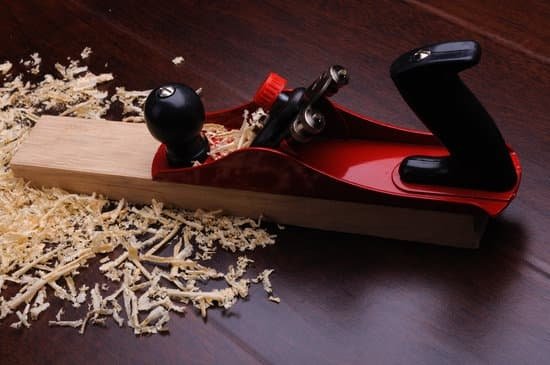Installing woodwork in a home or space can add immense value, beauty, and warmth to the environment. Whether it’s crown molding, baseboards, or custom cabinetry, woodwork has the power to transform a room and elevate its aesthetic appeal. In this article, we will explore the importance and benefits of installing woodwork, as well as provide a comprehensive guide on how to properly install and maintain it.
Choosing the right type of wood for your project is crucial in achieving the desired look and durability. Different types of wood have unique properties that make them suitable for specific applications. We will discuss the various types of wood commonly used for woodwork and their respective qualities to help you make an informed decision.
Before diving into the installation process, it’s essential to have the right tools and equipment at your disposal. From measuring and cutting to sanding and finishing, proper preparation is key to ensuring a seamless installation. Our guide will list down all the essential tools needed for a successful woodwork installation project.
Stay tuned as we take you through the step-by-step installation process, offering valuable tips and tricks along the way for a professional-looking outcome. Additionally, we’ll delve into finishing options such as staining, painting, or varnishing to enhance the overall appearance of your woodwork. And lastly, we’ll provide maintenance tips to help you care for your woodwork so that it lasts for years to come.
Choosing the Right Wood
Woodwork is a versatile and elegant addition to any home or space, adding warmth, character, and value. Choosing the right type of wood for your woodwork project is crucial in achieving the desired aesthetic and ensuring its longevity. There are various types of wood available, each with its own unique properties and characteristics.
One popular choice for woodwork is oak, known for its strength, durability, and prominent grain pattern. It is an excellent option for furniture, cabinets, and flooring due to its resistance to wear and tear. Another common wood used for woodwork is maple, which is prized for its pale color and fine texture. Maple is often chosen for cabinetry, flooring, and decorative moldings.
For a more exotic look, mahogany is a prestigious choice that exudes luxury and sophistication. It has a rich reddish-brown color with a straight grain, making it ideal for high-end furniture and decorative accents. Pine is another popular choice for woodwork due to its affordability, light color, and ease of workability. It is often used for rustic furniture, paneling, and trim work.
When considering the right type of wood for your woodwork project, it’s important to take into account factors such as the intended use of the finished product, the overall design aesthetic you wish to achieve, as well as the level of maintenance you are willing to commit to.
| Wood Type | Properties |
|---|---|
| Oak | Strength, durability, prominent grain pattern |
| Maple | Pale color, fine texture |
| Mahogany | Rich reddish-brown color with a straight grain |
| Pine | Affordability; light color; easy workability |
Understanding the unique properties of each type of wood will help you make an informed decision based on your specific needs and preferences when planning your woodwork installation project. Whether you’re looking to create timeless furniture pieces or enhance architectural features within your home or space – carefully selecting the right type of wood will ensure a stunning result that stands the test of time.
Tools and Equipment Needed
When it comes to installing woodwork, having the right tools and equipment is crucial for a successful and seamless installation process. Here is a list of essential items needed for installing woodwork:
- Measuring tape: Accurate measurements are key when installing woodwork to ensure a perfect fit and finish.
- Saw: Depending on the type of woodwork, you may need a handsaw, circular saw, or miter saw for cutting the wood to the required lengths and angles.
- Hammer and nails: These will be used for securing the woodwork in place.
- Level: To ensure that the woodwork is installed straight and even.
- Sandpaper or sander: For smoothing out any rough edges or surfaces before installation.
- Caulk and caulking gun: To fill in any gaps or joints between the woodwork and the wall for a seamless finish.
In addition to these basic tools, other equipment such as safety gear including gloves, goggles, and ear protection should also be worn during the installation process to ensure safety. It’s important to have all necessary tools and equipment ready before starting the installation of woodwork to avoid any delays or interruptions during the process.
Remember that using high-quality tools will not only make installation easier but also guarantee a professional-looking result. Knowing how to install woodwork can be made much simpler with the right tools at your disposal.
Preparation
Before diving into the installation process, it is crucial to ensure that precise measurements are taken to guarantee a seamless and accurate installation. Use a measuring tape to measure the dimensions of the area where the woodwork will be installed. Take into account any corners, angles, or curves that may require special attention. It’s always better to measure twice and cut once to avoid any costly mistakes.
Once all the measurements have been taken, it’s time to cut the wood pieces according to the specifications. Depending on the type of woodwork being installed, different cutting tools such as a saw, jigsaw, or miter saw may be required for straight edges, curves, or angled cuts. Take your time with cutting and ensure that each piece fits perfectly before moving on to the next step.
After all the wood pieces have been accurately cut, it is essential to sand them down before installation. This not only smoothens out any rough edges but also ensures a clean and polished look for the final product. Start with coarse-grit sandpaper to remove any imperfections or splinters, then gradually move on to finer-grit sandpaper for a smooth finish. Be sure to sand both the visible and hidden edges of the wood pieces for a professional-looking result.
By following these steps for proper preparation before installing woodwork, you can ensure a successful and aesthetically pleasing installation process that will stand the test of time. Now that you have prepared your materials adequately, you are ready to proceed with the installation process effectively.
Installation Process
Installing woodwork can add warmth, character, and a unique touch to any home or space. Whether it’s crown molding, baseboards, wainscoting, or window trim, woodwork can elevate the overall look and feel of a room. In this section, we will provide a step-by-step guide on how to install woodwork, including tips and tricks for a seamless installation.
Step 1: Measure and Plan
Before starting the installation process, it is crucial to carefully measure the area where the woodwork will be installed. This includes measuring the length of the walls for baseboards or the height of the ceilings for crown molding. Once measurements are taken, create a detailed plan for the layout of the woodwork to ensure a symmetrical and balanced look.
Step 2: Cutting and Mitering
After planning and measuring, it’s time to cut the wood pieces to fit the specific dimensions of the installation area. Most woodwork pieces will require mitered cuts at corners for a seamless look. Using a miter saw and taking accurate measurements is key in achieving precise cuts for perfect alignment during installation.
Step 3: Installation Techniques
When installing baseboards or crown molding, start with inside corners first before moving on to outside corners. Secure each piece using finishing nails or a pneumatic nail gun for efficiency. For more complex installations like wainscoting or paneling, use construction adhesive in addition to nailing for added stability.
By following these steps attentively, individuals can learn how to install woodwork effectively while understanding essential techniques such as proper measuring procedures and cutting methods. These steps combined with an individual’s creativity allow homeowners or interior designers how installing custom designed woodworking would offer them complete control over their living environment besides enhancing its appeal tremendously by transforming it into an aesthetically pleasing one that provides them comfort along with elegance.
Finishing Touches
Woodwork installation is not complete without the finishing touches. After the wood has been properly measured, cut, sanded, and installed, it’s time to enhance its overall appearance and protect it from wear and tear. There are various finishing options for woodwork, with staining, painting, and varnishing being the most popular choices.
Here are some popular finishing options for woodwork:
- Staining: Wood staining is a method used to change the natural color of the wood while still allowing its natural grain to show through. It adds depth and richness to the wood, enhancing its overall beauty. There are numerous stain colors available, from light to dark shades, giving you flexibility in achieving your desired look.
- Painting: Painting woodwork allows you to add a pop of color to your space. Whether you prefer a classic white finish or a bold statement color, painting gives you endless possibilities. It also provides an added layer of protection against scratches and fading.
- Varnishing: Varnish is a transparent coating that serves as a protective layer for woodwork. It enhances the natural beauty of the wood by giving it a glossy or satin finish. Varnish also provides durability and protection against moisture and UV rays.
Now that you have an overview of these finishing options for woodwork, consider which one best suits your desired aesthetic and level of protection needed for your space.
Maintenance
Woodwork is a beautiful and timeless addition to any home or space, adding warmth and character. However, in order to ensure its longevity, proper maintenance is essential. By taking the time to care for your woodwork, you can protect it from damage and preserve its beauty for years to come.
One of the most important aspects of maintaining woodwork is regular cleaning. Dust and dirt can accumulate on wood surfaces, leading to scratches and damage over time. Using a soft, microfiber cloth to gently dust your woodwork regularly can help prevent this buildup. Additionally, using a gentle wood cleaner or a mixture of mild soap and water can help keep your woodwork looking its best.
In addition to cleaning, it is important to keep an eye out for any signs of damage or wear. This includes checking for scratches, dents, or changes in the wood’s appearance. Addressing any issues promptly can help prevent further damage and prolong the life of your woodwork.
Finally, consider applying a protective finish to your woodwork. This can include staining, painting, or varnishing the wood to provide an extra layer of protection against moisture, UV rays, and other environmental factors that can cause damage. Regularly inspecting the finish and touching it up as needed can help maintain the integrity of your woodwork.
| Maintenance Tips | Details |
|---|---|
| Regular Cleaning | Use a soft cloth or gentle cleaner to remove dust and dirt regularly |
| Inspect for Damage | Check for scratches or changes in appearance and address them promptly |
| Apply Protective Finish | Stain, paint, or varnish the wood for added protection against environmental factors |
Troubleshooting
In conclusion, installing woodwork can be a rewarding and aesthetically pleasing addition to any home or space. The warmth and beauty that wood brings can enhance the overall ambiance and value of the surroundings. Choosing the right type of wood is essential in ensuring that the finished product meets both functional and aesthetic requirements. It is crucial to have the necessary tools and equipment for a successful installation, as well as proper preparation such as accurate measuring, cutting, and sanding.
The installation process itself requires attention to detail and patience, with a step-by-step guide being essential for a seamless finish. Whether it’s baseboards, trim work, or custom carpentry, following tried-and-tested methods will provide reliable results, enhancing the appeal of any room. Additionally, considering the various finishing options – such as staining, painting or varnishing – can further add character to woodwork.
Finally, proper maintenance is key to extending the longevity of woodwork. Regular care such as cleaning and refinishing when necessary will help preserve its natural beauty. Troubleshooting common issues encountered during the installation process is also crucial in ensuring success at every stage of the project. By addressing these issues promptly using effective solutions, any problems that do arise can be quickly resolved to achieve the desired outcome.

Hi everyone! I’m a woodworker and blogger, and this is my woodworking blog. In my blog, I share tips and tricks for woodworkers of all skill levels, as well as project ideas that you can try yourself.





